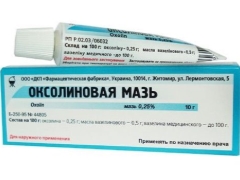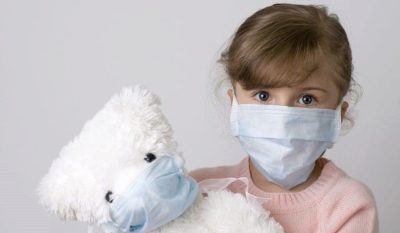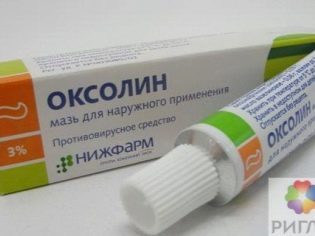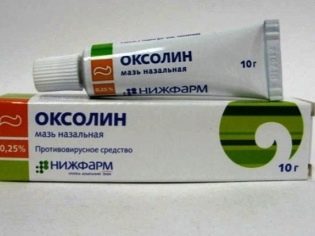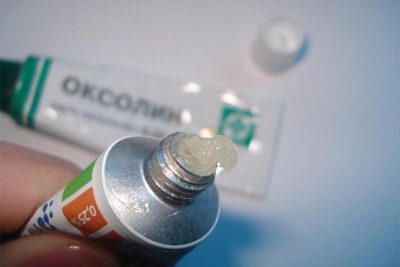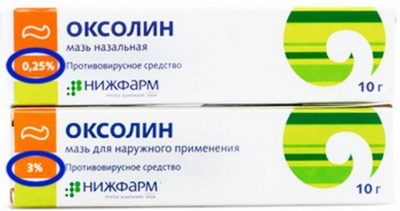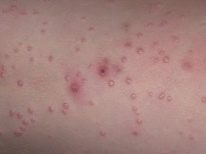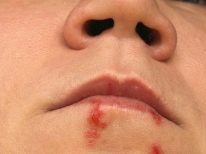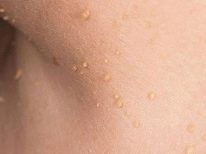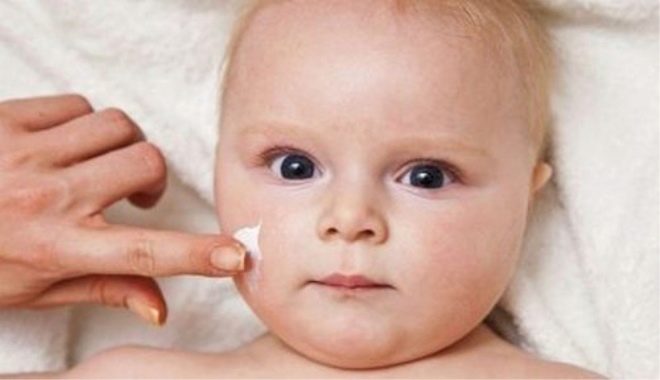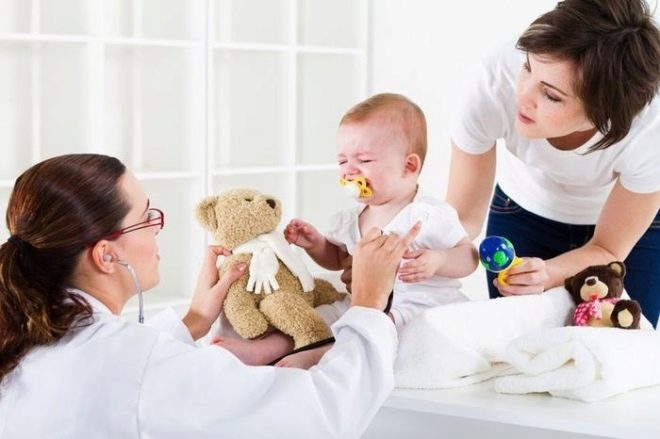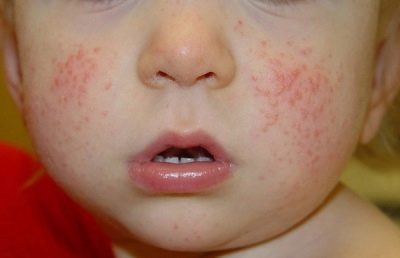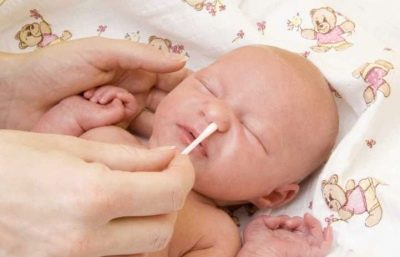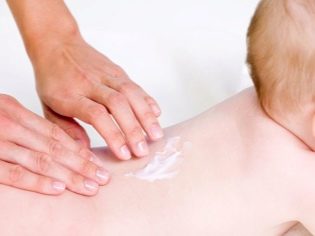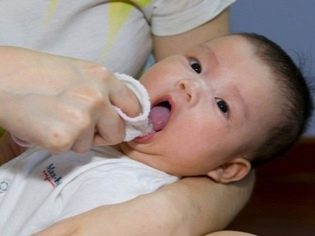Oxolinic ointment for children
Many adults consider Oxolinic Ointment to be an effective antiviral drug and are used to protect against colds and flu. They smear the nasal mucosa with this tool before leaving the house to prevent infection. But is such a drug allowed in childhood, when it is used in the treatment of children and is it prescribed for prophylaxis?
Release form
Oxolinic ointment, which is also called Oxolin, is produced by many domestic pharmaceutical factories. Depending on the purpose of use and composition, this drug is of two types:
- Ointment, which is used externally. It is more concentrated and applied exclusively on the skin.
- Nasal ointment. This tool is used only on the mucous membranes. This drug should be lubricated nasal passages from the inside. In addition, it is used to treat the oral mucosa or conjunctiva.
Both variants of Oxoline look like thick whitish mass. It is translucent and rather dense, it can be cast in yellow, gray or pink, but does not contain any inclusions.
One tube often holds 10 grams of ointment, but you can also find packs with a different amount of the drug (tubes and jars that contain from 5 to 50 grams of Oxolin).
Composition
The main ingredient of any Oxolinic Ointment is called dioxotetraagidroxitratihydroaphthalene. Such a long name is replaced by the word "oxolin." Its concentration in different ointments is different:
- Nasal ointment contains only 0.25% of such a component, that is, its amount per gram is 2.5 mg.
- In the ointment, which should treat the skin, the concentration of the active substance is 3%, which corresponds to 30 mg in each gram of the drug.
Auxiliary ingredients of the drug are petrolatum and liquid paraffin (also called liquid paraffin).
Operating principle
Oxolinum has an antiviral effect associated with viral viral reproduction. The drug affects infected cells and does not allow new viral particles to form, with the result that the development of the disease slows down and those viruses that already exist in the body die, and not having time to infect new cells. In addition, the drug does not allow viruses to bind to cell membranes, which leads to its preventive action.
Oxolinic ointment is effective against:
- adenoviruses;
- papillomaviruses;
- herpes viruses (including chickenpox pathogen);
- molluscum contagiosum virus;
- flu viruses.
The active substance from the ointment applied to the skin (3%) is absorbed by only 5%, and from the nasal ointment - by 20%. Oxolin in the body does not accumulate and is excreted in the urine during the day.
Indications
The scope of Oxoline is determined by the type of drug. Nasal Oxolinic Ointment is used:
- as a prophylactic against viral diseases of the nasopharynx;
- with a cold that has a viral nature;
- with stomatitis and to prevent the appearance of ulcers in the mouth;
- with keratitis, conjunctivitis and another viral eye disease.
3% Oxolinic ointment is used:
- with herpes simplex, and also with chickenpox;
- contagious mollusk;
- from warts and papillomas;
- with scaly, bubbly or shingles;
- with psoriasis (as an addition to other therapies).
At what age is it allowed to take?
According to the instructions for the drug, Oxolinic ointment is prescribed to children older than two years, which is associated with sufficient maturity of the respiratory organs of such children. In younger patients, the nasal passages are too narrow, and the use of an ointment can provoke the spread of infection and inflammation of the middle ear. In addition, babies' airways are more prone to spasms.
At the same time, many physicians consider Oksolin to be harmless to young children, therefore, although rare, it can even be given to infants.
However, the use of drugs in newborns and older babies (under the age of 2 years) without consulting a doctor is prohibited. Only a specialist can assess whether such a medicine is needed in such young patients, and will advise how to apply it correctly.
Contraindications
Oxolin treatment is forbidden if you are hypersensitive to its components. In addition, it is impossible to lubricate the mucous membranes with a 3% ointment, because this will provoke local irritation and cause excessive drug absorption into the blood.
Lubricating the skin with 0.25% ointment is also not recommended, because the low concentration of the active compound of such a drug does not affect the affected tissue.
Side effects
After treatment with oxolin, some patients may experience irritation, redness, increased nasal discharge, or itching. Occasionally, an allergic reaction such as dermatitis develops on such a drug.
Instructions for use
Oxolinic ointment is recommended to process the mucous membrane of the nose twice or three times a day, carefully spreading the drug in a thin layer. Apply the medicine can be either a finger or a cotton swab. If a child protests against lubrication, You can apply the ointment first on your skin, showing that it is harmless.
It is necessary to lubricate the nose very carefully, so that during the manipulation it does not damage the mucous membrane. If the child is under three years old, the ointment can be mixed with baby cream in a ratio of 1 to 1.
The duration of use for a cold is usually 3-4 days. If the drug is used prophylactically, it can be used throughout the dangerous period of the epidemic for a total duration up to 25 days.
When using 3% ointment, such a preparation is applied with a thin layer on the affected skin. The frequency of treatment is also 2-3 times a day. The medicine is spread by stroking movements over the surface, but not rubbed. The treated area can be covered with a bandage on top.
The duration of use of this type of Oxolin is from 2 to 8 weeks. The duration of treatment is determined by the rate of recovery. If the ointment is used for warts, the treatment is often even longer (2-3 months).
If a child has viral stomatitis, then 0.25% of the drug is applied to the entire mucous membrane of the mouth three times or four times a day. Before treatment, the oral cavity is recommended to be cleaned with any antiseptic medicine. The drug is used until complete healing.
Overdose
Cases of negative effects caused in excess of oxolin were not previously noted. In case of overdose of the drug, its side effects may appear.
Terms of sale
Oxolinic ointment can be freely purchased at almost any pharmacy, because it is a non-prescription drug of domestic production. The average cost of 10 grams of medicine is 40 rubles.
Storage features
The shelf life of oxolinic ointment is 2 years. So that during storage, the drug has not lost its properties, it is advised to keep it at a temperature from +5 to +15 degrees. Oksolina storage should be inaccessible to kids.
Reviews
On the use of Oxoline in children respond differently. The advantages of the drug include an affordable price, low absorption, neutral smell, no side effects and safety for children of any age. At the same time, many parents complain that the effectiveness of this ointment is low. In addition, the drug, though rarely, but can provoke irritation of the mucous membrane.
Opinion of Dr. Komarovsky
The well-known pediatrician believes that the use of oxolinic ointment for prophylactic purposes is impractical. He attributes this drug (like many other antiviral medications) to remedies whose effectiveness has not been proven. According to Komarovsky, the same effects have petroleum jelly or ordinary children's cream.
In addition, a popular doctor is sure that more effective preventive measures against SARS and colds are frequent airing, humidifying the air, avoiding contact with the sick, good nutrition and personal hygiene.
Then watch a video in which Dr. Komarovsky shares his opinion on oxolinic ointment.
Analogs
Instead of nasal ointment, other antiviral agents may be used, for example, Amiksin, Isoprinosine, Kagocel, Amizon, Ingavirin, Arbidol, Panavir other. Local antiviral agents, which are also applied to the skin, for example, can replace the medicine for external treatment. Zovirax or Acyclovir.
Oxolin or Viferon?
Viferon in the form of an ointment, as well as Oxolin, is in demand as a preventive measure against influenza and other viral infections of the respiratory tract. However, the mechanism of action of these funds is different.
While Oxolinic ointment acts directly on viruses and interferes with their reproduction, Viferon ointment is able to stimulate the formation of interferon - a substance that helps destroy viruses after they enter the body.
It turns out that Viferon prepares the body for the attack of viruses in advance, avoiding infection, and Oxolin affects the already viral particles, helping to recover faster. In addition, interferon under the action of Viferon is formed not only in the nasopharynx, but also in other tissues, protecting the mouth and eyes from infection. In Oksolin there is no such effect - when processing the nose, it affects only the mucous membrane of the nasal passages.
